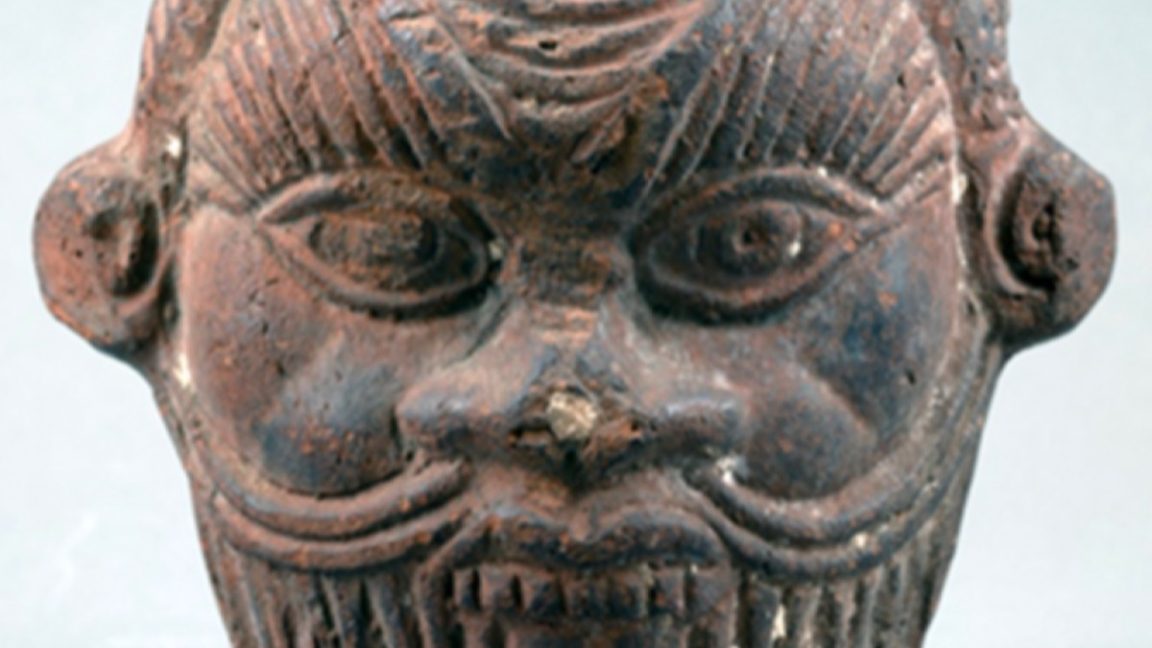Special concoction also contained honey, sesame seeds, pine nuts, licorice, and grapes to make it look like blood.
Last year we reported on preliminary research suggesting that ancient Egyptians may have used hallucinogens in their religious rituals, based on the presence of a few key chemical signatures taken from a ceremonial mug. Now those researchers have extended their analysis and fully identified the chemical components of those samples, confirming those preliminary findings, according to a new paper published in the journal Scientific Reports.
There is ample evidence that humans in many cultures throughout history used various hallucinogenic substances in religious ceremonies or shamanic rituals. That includes not just ancient Egypt but also ancient Greek, Vedic, Maya, Inca, and Aztec cultures. The Urarina people who live in the Peruvian Amazon Basin still use a psychoactive brew called ayahuasca in their rituals, and Westerners seeking their own brand of enlightenment have also been known to participate.
Last year, David Tanasi, of the University of South Florida, posted a preprint on his preliminary analysis of a ceremonial mug decorated with the head of Bes, a popular deity believed to confer protection on households, especially mothers and children. So unlike most other Egyptian deities, images of Bes were quite common in Egyptian homes. There were even special chambers built to honor Bes and his wife, Beset, at the Saqqara site near Cairo, which Egyptologists think could have been used for fertility or healing rituals, although their exact purpose is not certain (Bes was an ancient Egyptian deity of protection, fertility, healing, and purification). The mug is part of the collection of the Tampa Museum of Art.
Archaeologists have long speculated about the purpose of such mugs and what kinds of substances they once held. Scholars have suggested they held sacred water, milk, wine, beer, kohl, perfume, or medicinal potions, but few have been tested for traces of organic compounds. One 2004 study looked for residues of animal proteins in 23 Bes vases, but the DNA analysis turned up just four positive results due to protein degradation and other challenges.
After collecting sample residues from the vessel, Tanasi applied various techniques—including proteomic and genetic analyses and synchrotron radiation-based Fourier-transform infrared microspectroscopy—to characterize the residues. Among the more intriguing results of Tanasi's 2023 analysis was the presence of Syrian rue (Peganum harmala), whose seeds are known to have hallucinogenic properties that can induce dream-like visions, per the authors, thanks to its production of the alkaloids harmine and harmaline.
There were also traces of blue water lily (Nymphaea cerulea), which contains a psychoactive alkaloid that acts as a sedative; it's one of several candidate plants that scholars believe might be the fruit of the lotus tree described in Homer's Odyssey. Both were known to the Egyptians. In addition, he identified traces of a fermented alcoholic concoction containing yeasts, wheat, sesame seeds, fruit (possibly grapes), honey, and, um, "human fluids": possibly breast milk, oral or vaginal mucus, and blood. (The traces of human skin were dismissed as likely contamination.)
Mysterious mugs
Since then Tanasi has expanded his analysis, resulting in this latest paper. Along with co-authors from the University of Trieste and the University of Milan in Italy, he conducted additional chemical and DNA analysis of a pulverized sample scraped from the interior of the Bes mug. Tanasi also created a 3D scan of the Bes mug in Sketchfab, primarily for public outreach purposes, although this also allowed him to calculate how much liquid the mug could hold (about 90 ml).
In addition to confirming the previously identified components, Tanasi and his co-authors were able to identify traces of pine nuts or Mediterranean pine oil; licorice; tartaric acid salts that were likely part of the aforementioned alcoholic concoction; and traces of spider flowers (specifically Cleome gynandra or Cleome chrysantha) known to have medicinal properties—including inducing labor. This is consistent with people visiting Bes chambers to confirm successful pregnancies, and the presence of hallucinogens may have induced dream-like visions in that ritualistic context.
"At this point, we are 100 percent certain that psychotropic substances were used for 'incubation rituals' connected with the cult of Bes," Tanasi told Ars. "Incubation rituals are religious practices where people sleep in a sacred space to receive a dream from a deity that may provide healing or an oracle. In the Greek cult of Asklepios, god of medicine, sick worshippers had to spend the night in the sanctuary and wait to be visited by the god curing them during their dreams. Those dreams were triggered by drugs (pharmaka) dispensed by the priests. So, our research confirms an earlier practice that has later comparisons in several other cultures."
Performing similar analysis on other examples of Bes vases would further enhance our understanding of the purpose of these intriguing artifacts, and Tanasi hopes to do just that with Bes mugs belonging to the Allan Pierson Museum in Amsterdam, which were produced with the same mold used to cast the Tampa mug. Then he could determine whether there was just one recipe for the ritual potion or several.
Scientific Reports, 2024. DOI: 10.1038/s41598-024-78721-8 (About DOIs).
Hope you enjoyed this news post.
Thank you for appreciating my time and effort posting news every day for many years.
2023: Over 5,800 news posts | 2024 (till end of October): 4,832 news posts
RIP Matrix | Farewell my friend ![]()



3175x175(CURRENT).thumb.jpg.b05acc060982b36f5891ba728e6d953c.jpg)
Recommended Comments
There are no comments to display.
Join the conversation
You can post now and register later. If you have an account, sign in now to post with your account.
Note: Your post will require moderator approval before it will be visible.